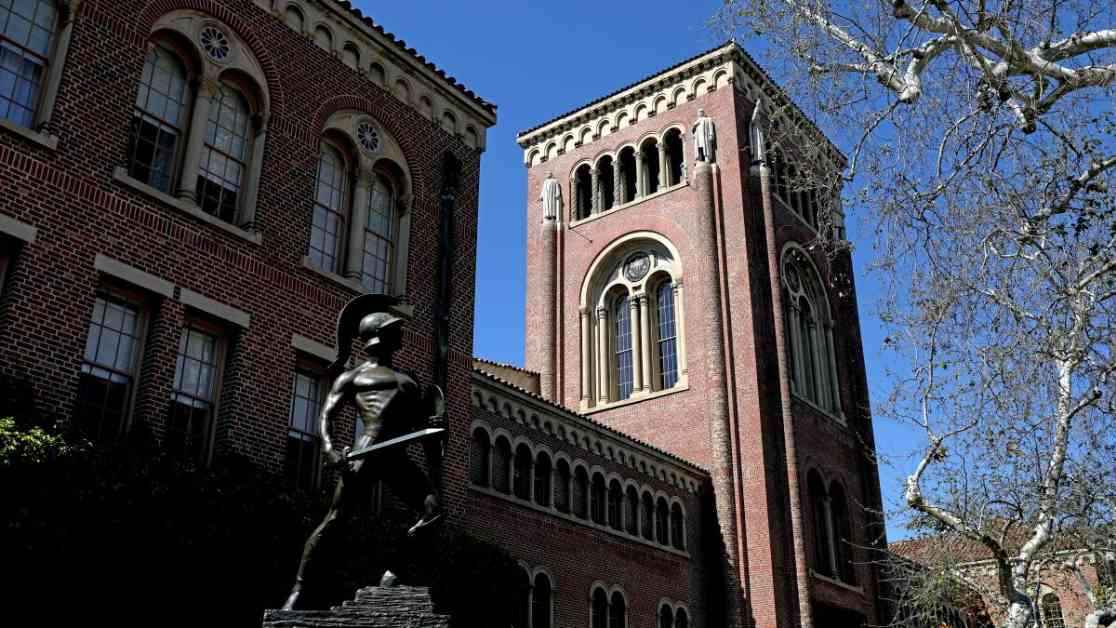USC Takes Steps Amid Federal DEI Crackdown
The Trump administration’s recent push to dismantle diversity, equity, and inclusion (DEI) programs across schools has sent shockwaves through universities nationwide. USC, one of the state’s most diverse and largest universities, has not been immune to this wave of change. In response to the looming threat of federal funding cuts, USC has taken proactive measures to distance itself from DEI initiatives, leading to a series of alterations in various departments and schools.
Strategic Moves to Navigate Federal Scrutiny
Amid the changing landscape of federal regulations, USC has strategically edited its website and faculty titles to align with the evolving legal requirements. The School of Cinematic Arts, School of Dramatic Arts, Annenberg School for Communication and Journalism, Leonard Davis School of Gerontology, Roski School of Art and Design, and the Department of Earth Sciences have all made significant adjustments. References to DEI mission statements, diversity programming, and staff positions have been either modified or removed entirely to comply with the shifting political climate.
Jerry Kang, a noted law professor and DEI expert, highlighted the trend of risk-averse overcompliance among universities facing federal pressure. Kang emphasized the importance of articulating a strong stance on DEI initiatives, even in the face of external challenges. This sentiment was echoed by Mitchell Chang, UCLA’s interim vice provost for equity, diversity, and inclusion, who emphasized the need for universities to remain steadfast in their commitment to DEI efforts.
National Response to Federal Directive
The Department of Education’s recent letter outlining a stricter stance on the use of race in admissions and other campus activities has prompted varied responses from universities across the country. While some institutions have opted to align with federal guidelines to secure funding, others, like Wesleyan University, have taken a defiant stance against what they perceive as authoritarian directives.
The president of Colorado State University underscored the financial implications of defying federal guidelines, emphasizing the need to navigate these challenges strategically. Similarly, the University of Cincinnati and the University of Alaska have made decisions to realign their programs in response to the federal mandate.
Expert Insights on Compliance and Resistance
Howard Rodman, a screenwriter and professor at USC’s School of Cinematic Arts, expressed his opposition to the university’s approach to DEI changes. Rodman raised concerns about the implications of compliance with federal directives, warning against the slippery slope of self-consoling rhetoric that could compromise the university’s mission and integrity.
Amelia Jones, a professor at the Roski School of Art and Design, characterized USC’s actions as capitulation in the face of external pressure. Jones questioned the balance between maintaining academic integrity and avoiding confrontation with federal authorities, highlighting the broader implications of compliance without resistance.
Looking Ahead: Navigating Uncertain Terrain
As universities grapple with the evolving landscape of federal regulations, questions remain about the future of DEI initiatives on campuses across the country. While some institutions have chosen to preemptively adjust their programs to align with federal guidelines, others are waiting for clearer directives before making significant changes.
Royel Johnson, an associate professor at the USC Rossier School of Education, emphasized the importance of maintaining a nuanced approach to DEI efforts amidst shifting political tides. Johnson highlighted the need for universities to uphold their commitment to providing safe spaces for all students, even in the face of regulatory uncertainty.
As USC and other universities navigate this challenging terrain, the delicate balance between compliance and resistance remains a central theme. The evolving landscape of DEI initiatives underscores the complex interplay between federal mandates, institutional autonomy, and the broader mission of higher education in promoting diversity and inclusion.
The actions taken by USC and other institutions in response to federal directives will continue to shape the landscape of higher education in the months and years to come. As universities grapple with the implications of compliance and resistance, the future of DEI initiatives remains uncertain, underscoring the need for a thoughtful and strategic approach to navigating this challenging terrain.


